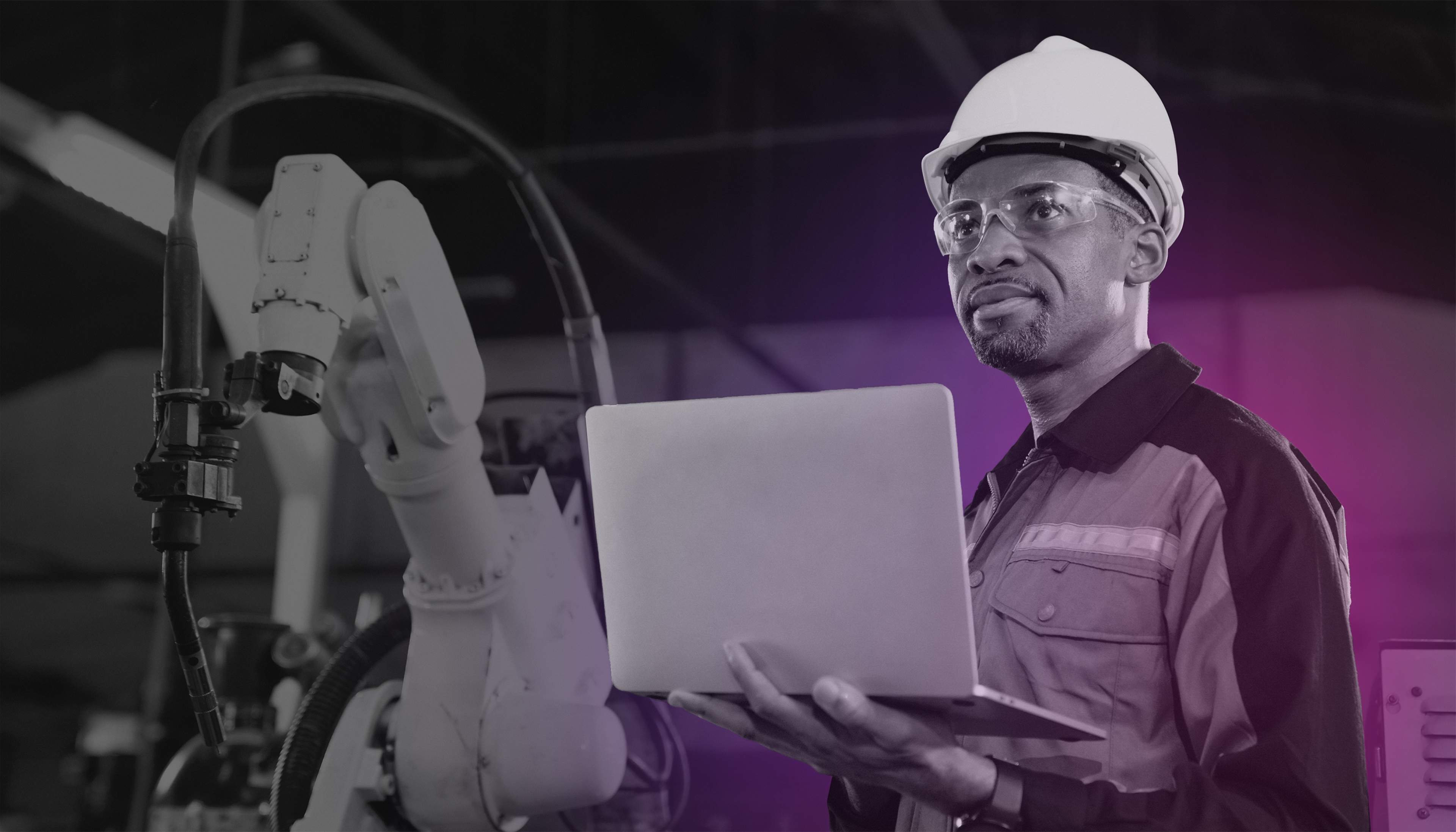The historical pattern of technological resistance
"It's dangerous. It will destroy jobs. It will never catch on."
These words echo through history, yet the data tells a different story. Manufacturing automation investments can yield an ROI between 30% and 200% in the first year through reduced manual processes and improved efficiency. Studies show that 75% of companies using industrial automation experience a 10-12% increase in productivity through enhanced efficiency, reduced errors, and optimized workflows.
Back in the late 19th century, Thomas Edison and Nikola Tesla raced to bring electricity to the public. Their innovation faced resistance primarily due to safety concerns and uncertainty about its applications. Today, 91% of the world's population relies on electricity, according to the International Energy Agency (IEA). Our modern world would be unthinkable without it. Yet, as technology and automation reshape manufacturing, we see similar patterns of resistance, fear, and eventual adaptation that have accompanied previous advancements.
From electricity to modern manufacturing
The pattern is clear: technologies that were once novel become essential to our work, and we evolve alongside them. Word processors replaced typewriters. Spreadsheet automation eliminated hours of manual calculations. Computer numerical control (CNC) machines and 3D printers have automated time-consuming aspects of manufacturing that were once entirely manual. In each of these examples, manual skills and error-prone processes were replaced. For those who embraced these technologies, possibilities grew, and new roles, skillsets, and efficiencies emerged.
Evolution of design and technology
As a designer with 14+ years in the industry, I've experienced firsthand the excitement, skepticism, and uncertainty that comes with technological change. When I was in school, I thought I'd be a print designer, but by graduation, smartphones and online commerce had transformed the landscape. When WordPress emerged, people claimed web designers would become obsolete. When ready-made design systems like Google's Material Design appeared, I worried my role would be reduced to dragging and dropping pre-made components — but here I am. I'm using the same design principles learned early in my career, and now applying them through new tools influenced by our current landscape.
Human-centered principles in manufacturing automation
The five core design principles
At TXI, our designers commit to five principles: Humanity, Curiosity, Ingenuity, Clarity, and Quality. It is no coincidence that Humanity is at the forefront: Smart automation must be designed with humans at the center. If a tool has no one who can or is willing to use it, how successful can it really be? As far back as 600 BCE, Ancient Greeks were documented to have explored the effects of static electricity. By no means were Edison or Tesla the first to see electricity's potential. However, they were able to package it in ways that could be used and adopted by the masses.
Understanding the human impact
The numbers tell a compelling story about smart automation, but the human experience behind these numbers truly matters. In my work with manufacturing clients, I've seen how automation transforms not just processes but people's relationship with their work. How automation frees individuals from repetitive quality-assurance tasks, allowing them to develop new skills and learn how to maintain the very systems that optimized their old tasks.
When implementing manufacturing technology, we start by understanding what aspects of their roles people excel at, what tasks bring the most value, and which activities consume excessive time or distract from core responsibilities. Companies implementing automation typically see their productivity increase by 10-12%, but this isn't just about doing more with less. It's about doing better with more – more skill development, more engagement, and more opportunity for innovation.
Quality improvements tell a similar story. While automated inspection systems can detect defects with remarkable accuracy, workers now have time to analyze patterns, identify root causes, and implement lasting solutions.
Case study: Transportation maintenance innovation
Initial discovery and approach
When our transportation maintenance client first approached us, they weren't looking to replace workers – they were looking to empower them. The company's success was built on the expertise of their maintenance technicians, but these skilled workers were spending hours on paperwork and documentation instead of applying their deep technical knowledge.
Collaborative implementation
Our journey began with conversations, not computers. We spent weeks walking the floor, talking with technicians, inspectors, and supervisors. We heard their frustrations about repetitive tasks taking time away from complex repairs. We learned about their ideas for improvement that they never had time to implement. Most importantly, we discovered their enthusiasm for technology that could help them work better, not replace them.
The implementation process is always a collaborative effort. From the moment we introduce new systems, we ask technicians to refine them based on their experience. As we develop digital workflows, client teams shape every feature. It’s not just about installing new technology – it’s about building tools that respect and enhance human expertise.
The future of human-machine collaboration
A balanced approach to implementation
The path to successful manufacturing automation isn't about following a checklist – it's about understanding the unique rhythm of each workplace and the people within it. The most successful implementations start with three simple questions: What do our people do best? What tasks prevent them from doing their best work? How can technology bridge that gap?
The future of manufacturing lies in this balanced approach. We're seeing exciting developments in artificial intelligence, robotics, and connected systems, but these technologies are tools, not replacements. They're most powerful when they amplify human capabilities rather than trying to replicate them.
Evolution of skills and roles
For some organizations, smart automation helps a smaller workforce achieve more. For others, it enables a larger workforce to expand its capabilities by automating routine tasks and allowing employees to focus on higher-value work. The key is understanding that digital technology and automation, like electricity and computers before them, aren't about replacement—they're about enhancement.
Conclusion: Embracing change while preserving human value
This evolution in manufacturing reminds me of my own journey in design. Just as I adapted from print design to digital platforms, we see manufacturing workers evolving their roles alongside new technologies. The core skills – attention to detail, problem-solving, and creativity – remain valuable, but they're being applied in new and more impactful ways.




